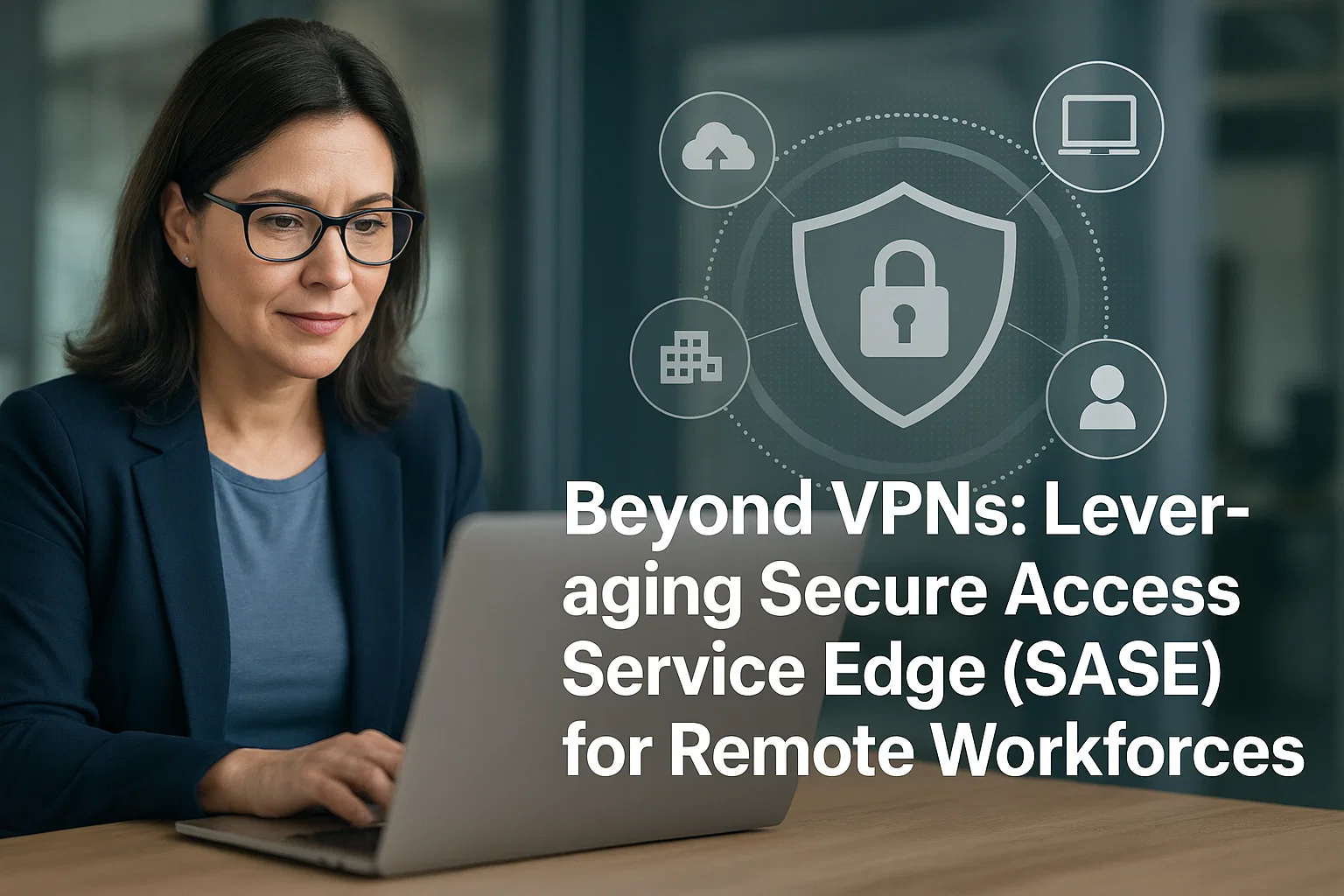Beyond VPNs: Leveraging Secure Access Service Edge (SASE) for Remote Workforces
Modern connectivity for the hybrid office

Virtual private networks have served remote workers for decades, but they struggle to keep up with distributed cloud apps and growing security threats. Secure Access Service Edge, or SASE, combines networking and security in a unified cloud service, giving remote teams a smoother and safer connection to company resources.
1 From Early VPNs to SASE
Remote access took off in the 1990s with dial-up VPN connections. As bandwidth increased, companies built centralized gateways to protect internal networks. But the rise of SaaS and remote work exposed VPN limitations: latency, complicated management, and inadequate threat detection. SASE was born from the need to place security controls closer to the user while maintaining granular policy enforcement.
2 What Makes SASE Different?
Traditional VPNs funnel all traffic through a central gateway, which can create bottlenecks. SASE delivers security functions—like firewalling, threat detection, and access control—closer to the user. Because it’s cloud-based, performance remains consistent whether employees connect from home, a coffee shop, or another office.
3 Transition Tips
To adopt SASE, start by mapping your current network flows and identifying which applications are business-critical. Choose a provider that offers robust identity management so you can enforce least-privilege access. Pilot the service with a small team before rolling it out company-wide, paying attention to user experience and security telemetry.
4 Future-Proof Connectivity
SASE isn’t just a replacement for VPNs—it’s a platform for scalable security. With continuous monitoring and centralized management, you can respond quickly to new threats and provide a reliable connection for employees anywhere. The right SASE strategy keeps your workforce productive without sacrificing protection.
5 Pros and Cons
Pros
- Reduces latency by inspecting traffic in the cloud
- Simplifies management of remote access policies
- Integrates multiple security features into one service
Cons
- May rely heavily on a single provider’s uptime
- Requires trust in the vendor’s cloud infrastructure
6 Getting Started
- Audit existing VPN usage and document critical applications.
- Evaluate SASE vendors for compliance certifications and integration support.
- Run a pilot with a subset of remote workers and gather feedback.
- Plan phased migration to avoid disrupting business operations.
7 Conclusion
Moving beyond traditional VPNs doesn’t have to be daunting. By understanding SASE’s origins and capabilities, you can craft a remote access strategy that scales with your workforce and keeps data secure.
With thoughtful planning and open communication, your transition can be smooth—delivering better performance and stronger security for every employee.
As your organization adopts SASE, revisit policies quarterly to ensure they align with new applications and threat landscapes. A well-managed rollout builds trust among remote staff and positions IT as an enabler rather than a bottleneck.
8 Historical Background
Remote connectivity tools have evolved from dial-up connections to enterprise VPNs. As companies shifted to cloud applications, traditional VPNs struggled with scalability and security. The SASE concept emerged around 2019, merging wide-area networking with next-generation security delivered from the cloud.
9 Pros and Cons of SASE
- Pros: Consistent policy enforcement across locations and simplified management for IT teams.
- Cons: Dependence on an internet connection and service-provider reliability can be problematic in areas with poor connectivity.
10 Actionable Steps
- Map User Needs: Identify who requires access to which applications and tailor policies accordingly.
- Plan Gradual Migration: Transition groups in phases to minimize disruption and monitor performance metrics.
- Educate Employees: Provide training so users understand new login procedures and the importance of secure access.
11 Conclusion
SASE is a natural evolution of network security, born from the need to protect data wherever employees roam. By understanding its history and carefully planning deployment, organizations can give remote workers a reliable, secure connection that adapts to future challenges.
11.1 Looking Forward
Industry analysts predict that SASE adoption will accelerate as hybrid work becomes the norm. Vendors are adding advanced analytics and zero-trust capabilities to their offerings. Keep an eye on service-level agreements and data privacy requirements as you evaluate providers. Early planning now ensures your network can handle new workloads and evolving threats.